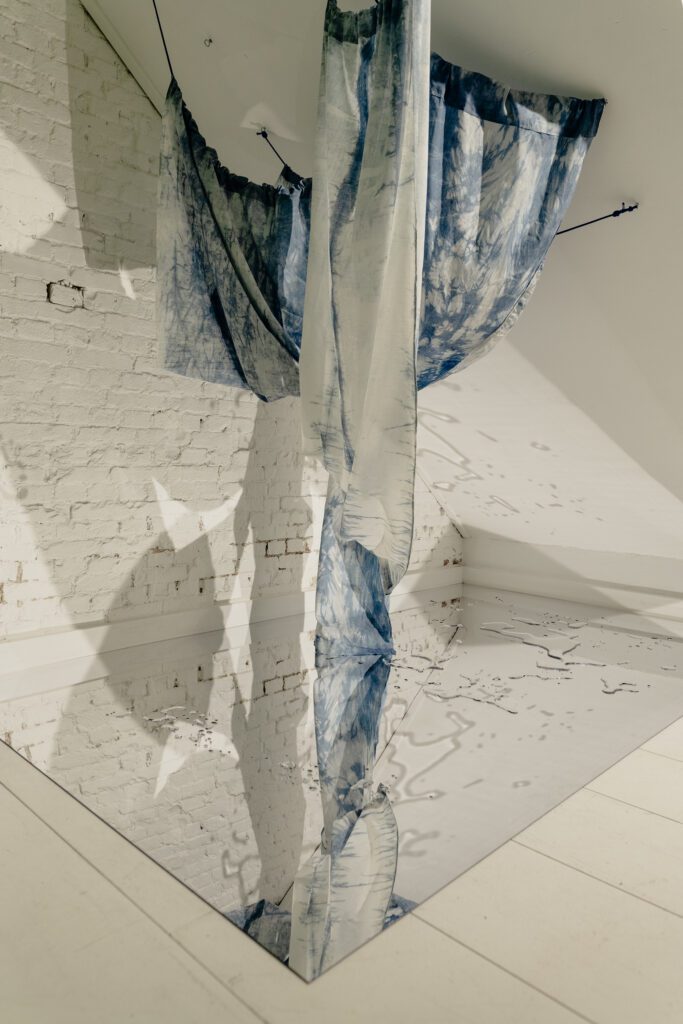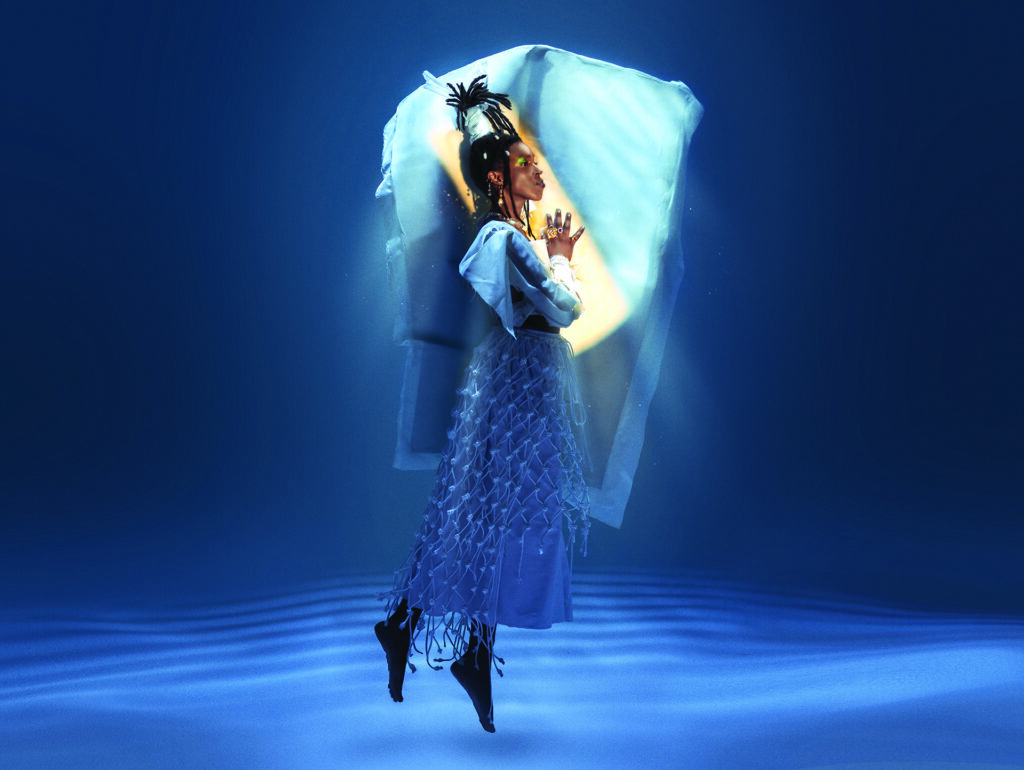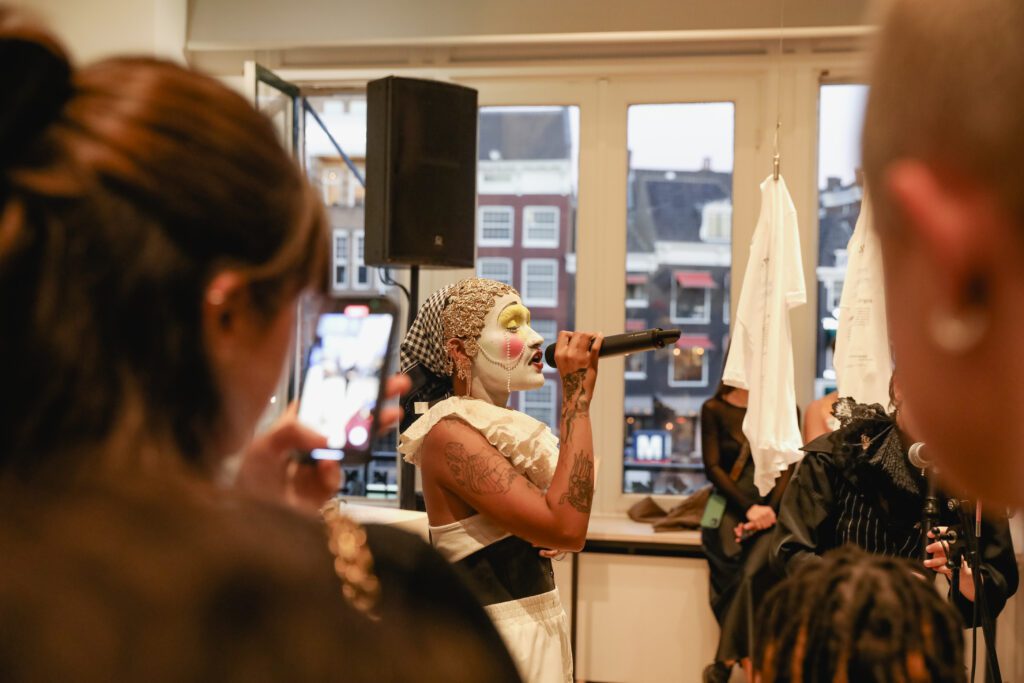Knowing Cotton Otherwise (2023-24)
The “Knowing Cotton Otherwise” exhibition introduces audiences to the lesser known stories of cotton through the lens of sustainability.
Cotton is perhaps the world’s most well-known fabric and has a long and tangled history, yet many stories behind cotton are unknown. Some of these untold, sometimes unexpected perspectives were collected and brought together in the exhibition Knowing Cotton Otherwise, was on display at the Fashion for Good Museum between October 2022 and October 2023. The exhibition explored the relationship between cotton and the fashion industry, the role of cotton in an increasingly intertwined web of global cultures, and the sustainable innovations driving its circular transformation. Based on principles of collectivity and community, local artists were invited to create multisensory installations that connect and intersect with themes relating to the impact of cotton on people and the planet. By mixing styles and stories, Knowing Cotton Otherwise sought to invite visitors to engage in self-reflection and critical consideration. The exhibition addressed cotton’s burdened history as well as sustainable and innovative solutions, offering alternative standpoints to the challenges of cotton production and consumption. Where does cotton come from? How is it grown? What is the future of cotton and the role of innovation? How should we relate to the more questionable aspects of cotton, from its history of forced migration and forced labour to more modern-day challenges? And how can we celebrate cotton, the connections it creates and the opportunities around it? The exhibition invited dialogue, encouraged play and sparked wonder in a safe space and an atmosphere that inspires coming together, exchanging and togetherness. Through the interdisciplinary bridging of art, design and science, the exhibition provided a colourful and interactive space, continuously activated through public programmes and the addition of new stories throughout the year.
Content of the exhibition
Knowing Cotton Otherwise was presented in three different chapters, each lasting four months, allowing the exhibition to grow and evolve. Each chapter was created in collaboration with various artists, initiatives and experts, building on each other’s contributions and increasingly layering the narratives of the exhibition. Their work related to one or more of eight themes, woven throughout the spaces and chapters of the exhibition: agriculture, climate, end-of-use, (forced) labour, origin, processing, transparency, and water. The first chapter formed the baseline of the exhibition, introducing key terminology through an interactive mechanism of eight symbols, each referring to one of the exhibition’s themes. These symbols created an accessible starting point for interpretation of the exhibition’s interwoven stories throughout the installations, as well as a curatorial exercise in carefully considering terminology and definitions to create shared understanding. The first chapter featured artists Benoît Gilles Michel, Caithlin Courtney Chong, Mario Gonsalves, Niño Divino, Noah Cohen, Nsimba Valene and Tasio Bidegain as well as fashion collective The Gang is Beautiful. This first chapter painted an introductory overview of perspectives around cotton, initiating conversations about end-of-use, traceability, origins, and more. The exhibition also presented innovative solutions addressing these issues, including Oritain and Officina39, used by the artists in their installations.
The second chapter was titled Bodies of Work and dove into the rich story of the body as a carrier of cotton’s problematic history. In particular, the chapter focused on (forced) human labour and (non) human entities, as well as the use and re-use of cotton in fashion and technology. Artist Tricia Mokosi, was invited to create looks of found cotton materials, sourced from second-hand shops in Amsterdam, which came to life when they were worn during a series of dance performances. Dr. Sha’Mira Covington created a research-based installation on the history of cotton in the United States, the fashion industrial complex, and the idea of cultural sustainability. Through both historical and contemporary objects, she invited visitors to ask questions about the role of cotton in their own lives, non-Western history and, in particular, the history of the black diaspora. Material science innovator Natural Fiber Welding created a threaded sculpture to represent an alternative to traditional cotton production: the CLARUS® technology, where the science of ‘welding’ is applied to strengthening thousands of individual fibres into strong, high performance, natural yarn.
The third and final chapter, titled Flipping the Script, challenged Eurocentric concepts such as ‘classic’ style or ‘basic’ wardrobe staples with two final additions to the exhibition. Designer Angelo Elizabeth created a multisensory installation which teleported the visitor to the island of Curaçao, where he spent many treasured hours in the blossoming garden of his grandmother. It is in her honour, as well as in honour of Aruban resistance heroine Virginia Dementricia (1842-1867), that he created his graduation collection 1863, referring to the year slavery was officially abolished in Surinam and the former Netherlands Antilles. Similarly, Nsimba Valene Lontanga celebrated the women in her life, like the ‘aunties’ from Congo, by rethinking sustainability and trends inspired by ‘auntie style’. She designed a modular capsule collection of style staples, including a wrap dress combination that can be worn in various ways, made by Ghanaian tailors, of traceable eco-cotton sponsored by US manufacturers Supima cotton. The final chapter was ceremonially closed with two performances by artists Roxane Mbanga and Travis Geertruida, presented during the Finissage of the exhibition.
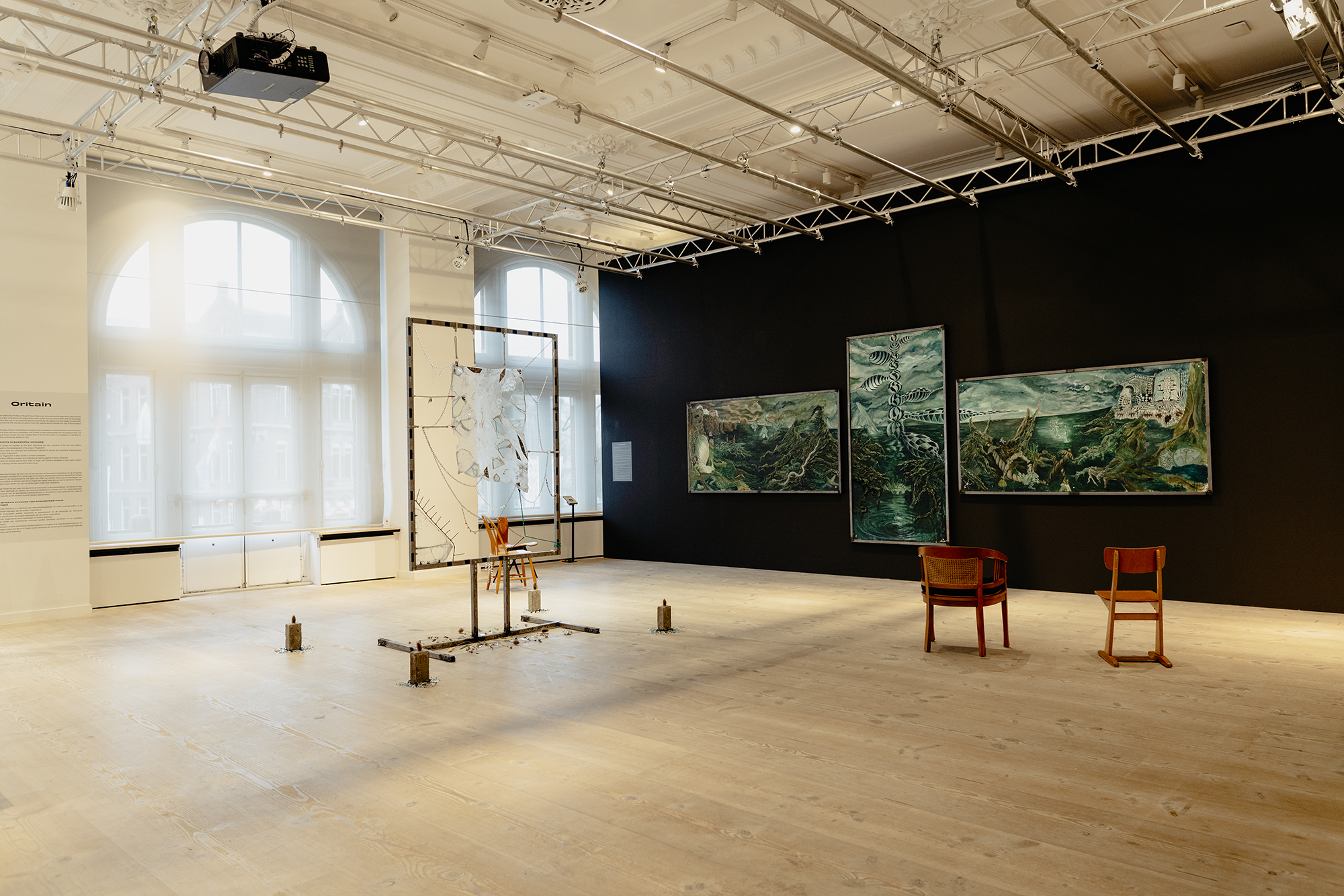
Public programme
To ensure its continuous (re)animation, the exhibition was complemented by an extensive public programme inviting visitors to engage with each of the three chapters, and become part of a community through the exhibition. The programming included a series of four Salon Talks with film screenings and panel discussions, a six-week pop-up exhibition with Open Space Contemporary Art Museum (OSCAM) and an interventive performance by multi-hyphenate Jean-Paul Paula. In addition, each new chapter was launched with a festive opening ceremony featuring talks and performances, spotlighting the contributors of the chapter and activating the installations, allowing visitors to encounter the exhibition in multiple ways. This variety of programmes, from intimate events to large celebrations, each critically explored themes and issues around cotton, expanding and deepening the exhibition. We targeted a range of new audiences, building a community of visitors who had never visited the Museum before, and inviting them to celebrate, connect, exchange ideas and learn from each other. To this end, the programming was free and fully open to the public, with great care taken to create safe and intimate spaces, which allowed for emotional experiences and facilitated complex conversations.
Pilot education programme and toolkit
Alongside the public programmes, the Museum and Yophi Ignacia piloted an educational programme in collaboration with Dutch schools Saxion College, Zadkine MBO, MBO Rijnland and Hoogeschool voor de Kunsten Utrecht, introducing MBO (vocational education) and HBO (higher education) fashion students to the themes of the exhibition. This pilot programme was then developed into a free education toolkit titled Classroom of the Future: The Stories Behind Cotton, a six-week curriculum for fashion-focussed vocational and higher education. The toolkit brings the exhibition to the classroom with numerous contributions from local creatives and experts including Deyrinio Fraenk (Atelier Reservé Amsterdam based fashion brand), Esther Muñoz Grootveld (independent curator and program maker) and, Yasmina Ajbilou (House of Useless, Utrecht-based fashion brand). The playful and interactive visual language of the toolkit was created by Sophie Douala, who also created the design of the exhibition. It contains content in different media to support a range of learning styles, and a care structure to ensure safe spaces for discussion in the classroom, facilitating alternative teaching modes in fashion education.
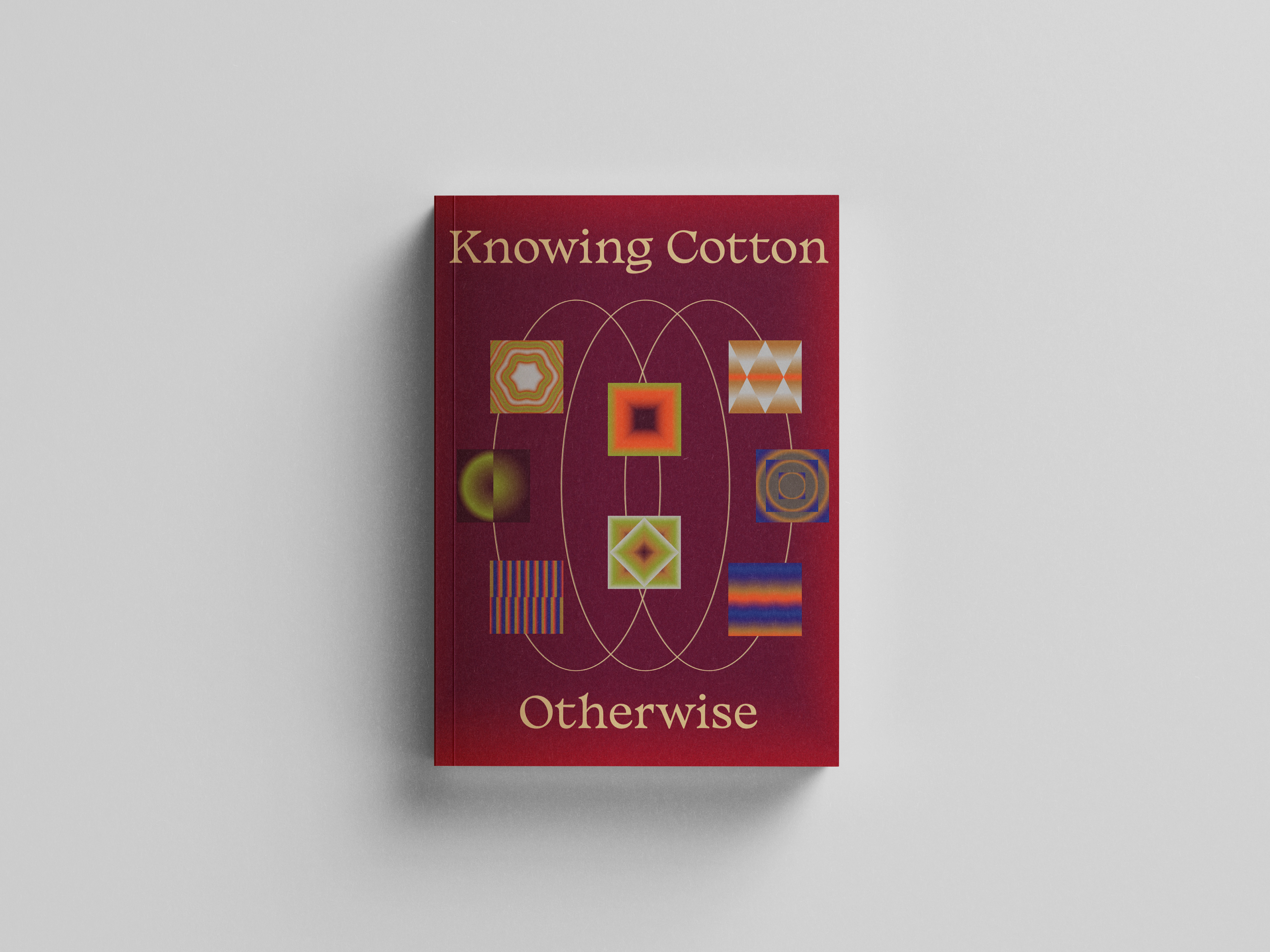
Publication
To ensure all of these stories will continue to be cherished and shared, the Fashion for Good Museum team developed a unique publication to celebrate the outcomes of the exhibition, launched in December 2023. Knowing Cotton Otherwise, published by Uitgeverij Wilde Haren and designed by Sophie Douala, features interviews, reflective essays, opinion pieces, photoshoots and more, showcasing the work of the many innovators, designers, artists and thinkers who contributed to the exhibition and its public programming. Bringing together all the knowledge, stories and perspectives of this community of creatives, the publication is a critical yet inspiring book that will remain a tangible legacy of the exhibition.
The exhibition was made possible by the generous support of Amsterdams Fonds voor de Kunst, FONDS 21, Het Cultuurfonds, Stichting Zabawas, and Stimuleringsfonds Creatieve Industrie.
![]()
![]()
![]()
![]()
![]()
Conversations for Good
The museum invited Shaquille Shaniqua Joy, moderator, program maker and creative producer, to moderate a series of conversations with the artists of the exhibition, titled ‘Conversations for Good’.
Joy has a fascination for people, their stories and their creations, and describes herself as someone who can easily get excited and find inspiration everywhere. “I sometimes say I talk for a living because my work centres around having conversations in front and behind the camera as well as on air and in real life.” In addition, she loves creating public programs in which she combines all of the above by bringing together art in the broadest sense, conversations, and inspiring people in a physical space. She describes her job as “almost a lifelong paid research.”
“Having conversations in spoken and written form around Knowing Cotton Otherwise has been interesting because of the various perspectives included in this exhibition. I’ve learned a lot throughout the process of talking to everyone who’s involved. One of my favourite takeaways/reminders is that it’s fine not to have an answer to everything. Accepting that there isn’t always one definite end goal emphasises the importance of ongoing conversations, which brings me back to what I love so much about my work.”
Conversations for Good
The museum invited Shaquille Shaniqua Joy, moderator, program maker and creative producer, to moderate a series of conversations with the artists of the exhibition, titled ‘Conversations for Good’.
Other Education Programmes
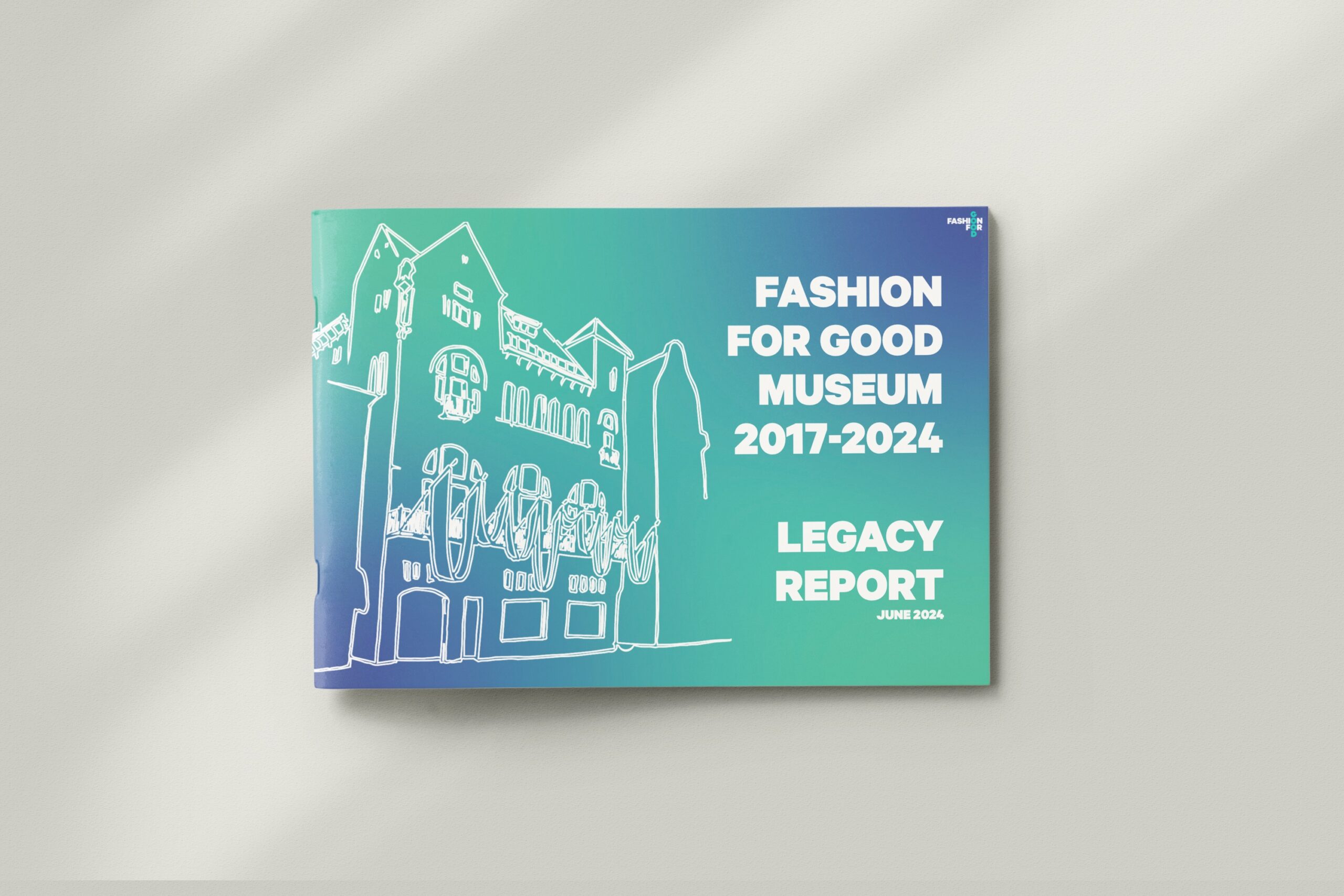
Museum Legacy
On this page you find our Museum legacy document, celebrating the incredible journey of the Fashion for Good Museum. As the Museum doors have closed on June 5th, 2024, we want to extend our deepest gratitude to you, our amazing community of conscious consumers and visitors.
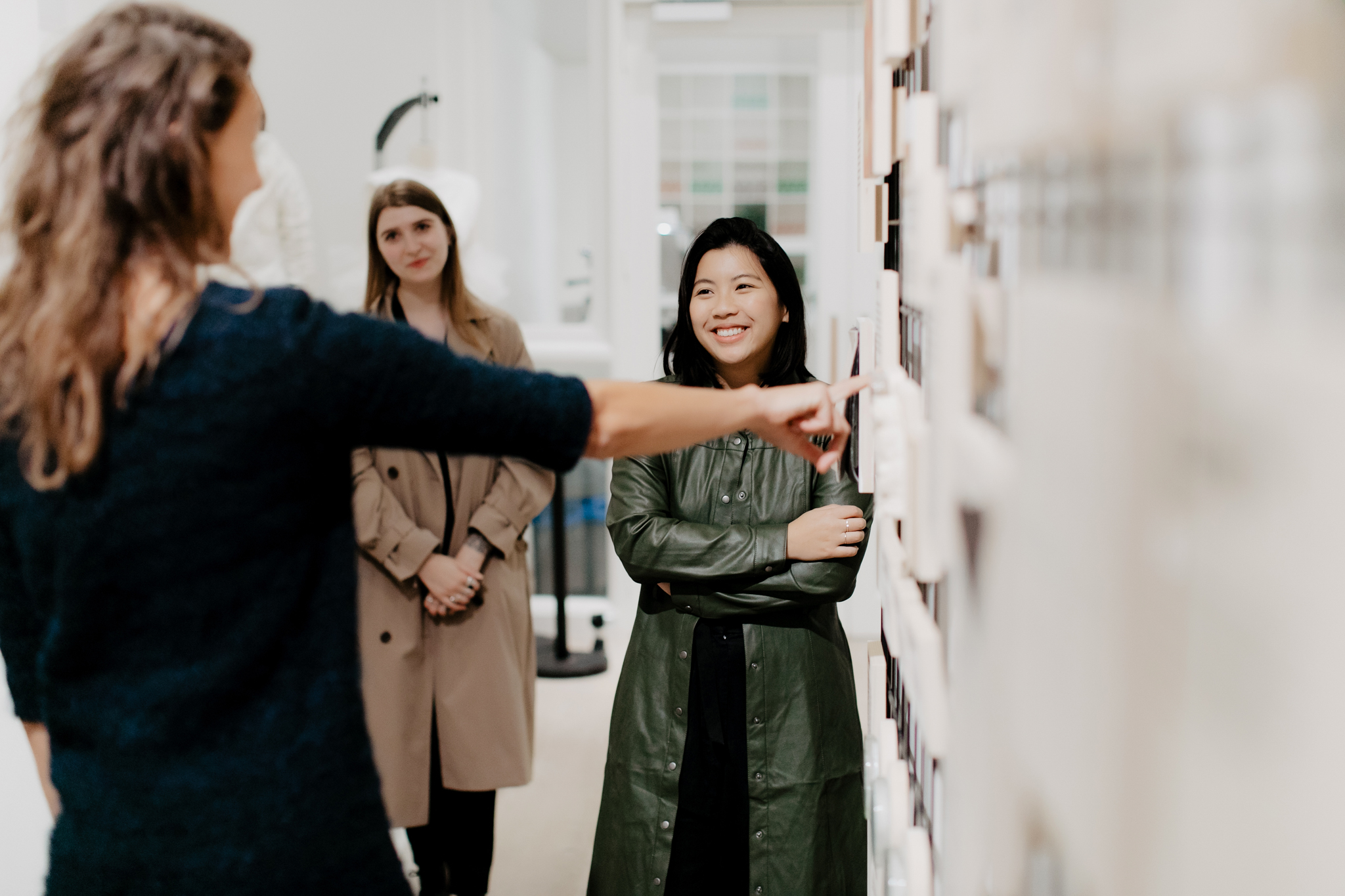
Educational Resources
Change starts with the new generation of industry professionals, but also with the individual consumer. Our educational programmes and tools help younger generations understand their role in the narrative, giving them the knowledge and tools to take action and change fashion for the better.
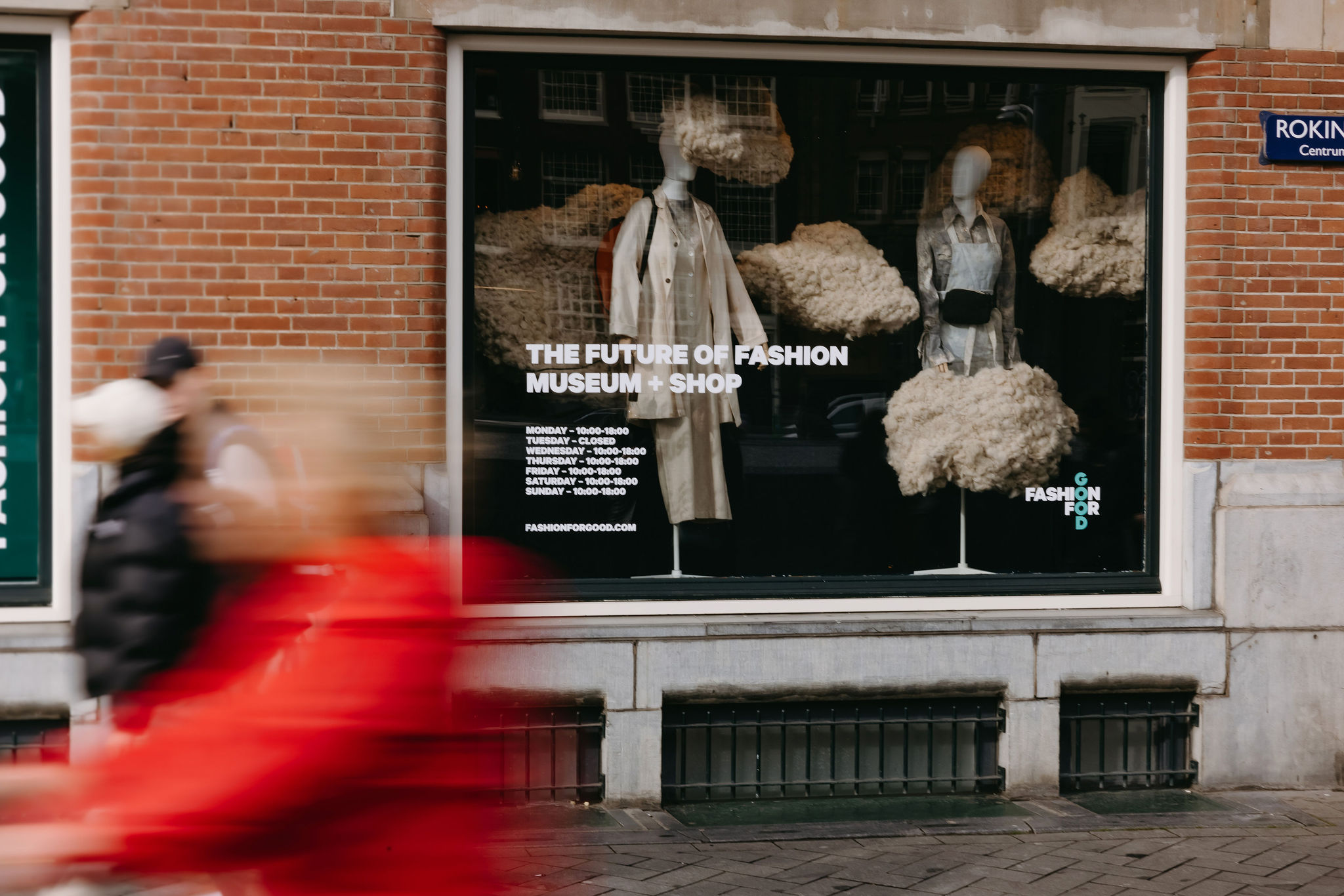
Past Exhibitions
Discover some of our past exhibitions on this page. Read up on our approaches to sustainable exhibition development and discover the artists and designers we featured in our exhibitions GROW, Knowing Cotton Otherwise and What Goes Around Comes Around.




